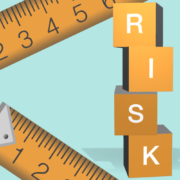What are the consequences of poor risk analysis and risk management?
We have already talked about the importance of good risk analysis and management for every kind of organization. On the other hand, poor risk management has the ability to impact your business severely on each level. Let’s have a look at the potential consequences that this could lead to. Below you can find 5 of the most significant impacts of poor risk management as well as what you could do about them, or avoiding them.
Delay in Project Schedule
First of all, unforeseen risks can lead to a delay in a certain project. This is because it takes time to understand and analyze them and then prepare a management strategy. Also, sometimes the different stages of risk management (after it has already been analyzed) can last longer. Therefore these management activities will push out other important project activities.
In order to avoid all this, it is important that you schedule regular risk workshops. This will ensure the early identification and consequently the easy management, in case the risk eventually takes place. It is also a good idea to include a buffer time in high-risk projects, so that risk management can happen smoothly but not in a rush and mistakes are avoided.
Overspent budget
It is true that risk management costs money. But it will be far more expensive to deal with poor risk management in case a risk materializes and impacts your business. When we talk about overspent budget, this means that in the very beginning the risks and the actions, related to managing them are not well-budgeted. Overspend also happens if a risk is not identified at all. In this case the project team has to find money to tackle the situation before it leads to a project failure. As we said, the most reasonable thing to do is to plan the budget of a project including the element of riskiness. Having calculated some extra budget saves you stress, overexpenditure and eventually and most importantly – a failure.
Project Failure
This is the worst scenario that poor risk management could lead to. It means that the time, cost and effort, invested in the project, are wasted and therefore the objectives are not met. What you should do is incorporate risk management in your project controls. In this way you will have an early warning of when a risk could cause disturbance in the project and make it collapse. People taking part in the project will know what to do and who should take a particular action in case the potential risk occurs.
Unrealized benefits
Project benefits could be killed overnight, or gradually, by inefficient management practices. Therefore, to make sure that your team will be working efficiently, and won’t be burdened by additional tasks, you should fit the risk management efforts to your office culture as well as to the size of your business. If your team is not stuck in additional bureaucracy stuff, they will be able to complete the required activities smoothly and effortlessly, thus contributing to the benefits of the organization in the end.
Dissatisfied Clients
People do not want to take part and be involved in something that is considered to be risky or even potentially risky. Clients would want to have an idea about how you mitigate risks and if you have a plan B in case of any threat. Many companies prefer to involve their clients, or let’s say get them acquainted with what they are doing to identify, monitor and manage risks. A good way to do this is the regular report of risks and the methods of tackling the situations that consequently occur.
Unhappy clients damage the company’s reputation not only at present but lead to negative implications for future work too. We could say that unhappy clients are a risk too – a risk for the organization’s reputation.
Risk management doesn’t have to be something difficult or complicated. It won’t be so, if you estimate the right size of your team, the efforts and the processes. In fact, risk management is a solution which should be an integral part of a company’s overall business strategy. It could prevent project failure, financial losses and business collapse.












Leave a Reply
Want to join the discussion?Feel free to contribute!